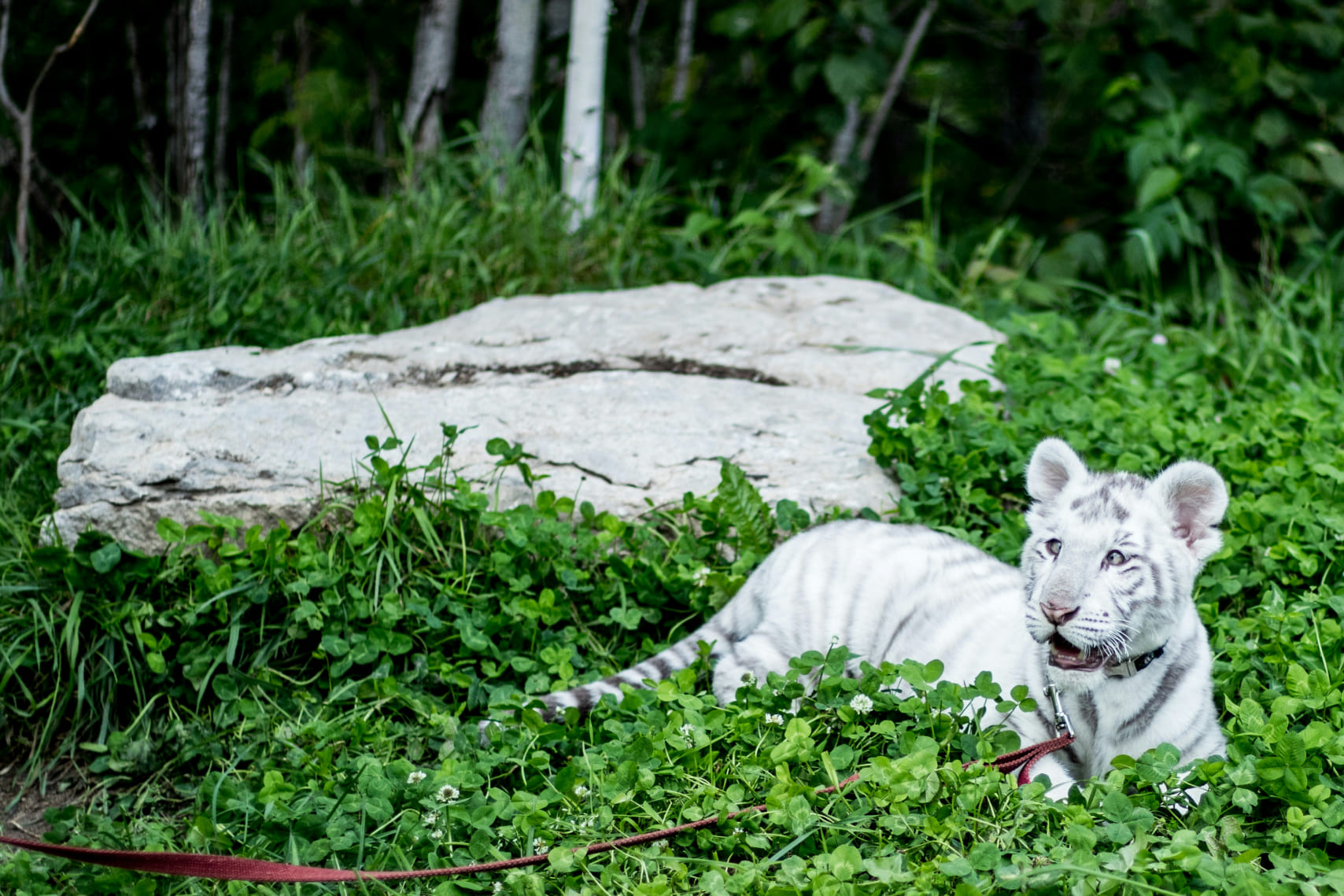- [email protected]
- Mon - Sat 8:00 - 6:30, Sunday - CLOSED
Journey Through the Zoo

The White Tiger Cub: A Rare and Precious Treasure
A white tiger cub is a symbol of wonder and rarity, captivating zoo visitors with its adorable appearance and unique beauty. White tigers are not a separate subspecies but a genetic variation of Bengal tigers (Panthera tigris tigris). Their striking white fur, blue eyes, and pink noses make them an unforgettable sight, especially when they are cubs.
In zoos, the arrival of a white tiger cub is often celebrated as a special event. These cubs are born in carefully monitored environments where their health and development are closely observed by veterinarians and zookeepers. During their first few months, white tiger cubs rely entirely on their mothers for nourishment and protection, mirroring the behaviors of wild tigers. If a cub is orphaned or rejected, zookeepers step in to hand-rear the cub, providing round-the-clock care.
White tiger cub enclosures are designed to be safe and stimulating. They include soft bedding, climbing structures, and small pools for exploration. Playtime is an essential part of their growth, helping them develop coordination and strength. Visitors delight in watching cubs chase each other, pounce on toys, and interact with their environment.
Feeding a white tiger cub is another fascinating process. Initially, they are fed milk, and as they grow, their diet gradually shifts to include minced meat. Enrichment activities, such as hiding small treats or creating puzzle feeders, encourage the cubs to use their developing senses and instincts.
The presence of white tiger cubs in zoos also sparks conversations about conservation and the ethics of breeding for rare traits. While these cubs are undeniably beautiful, zoos emphasize the importance of protecting wild tiger populations and preserving natural habitats. White tiger cubs serve as ambassadors for their species, inspiring visitors to support conservation efforts and learn more about the challenges faced by tigers in the wild.
